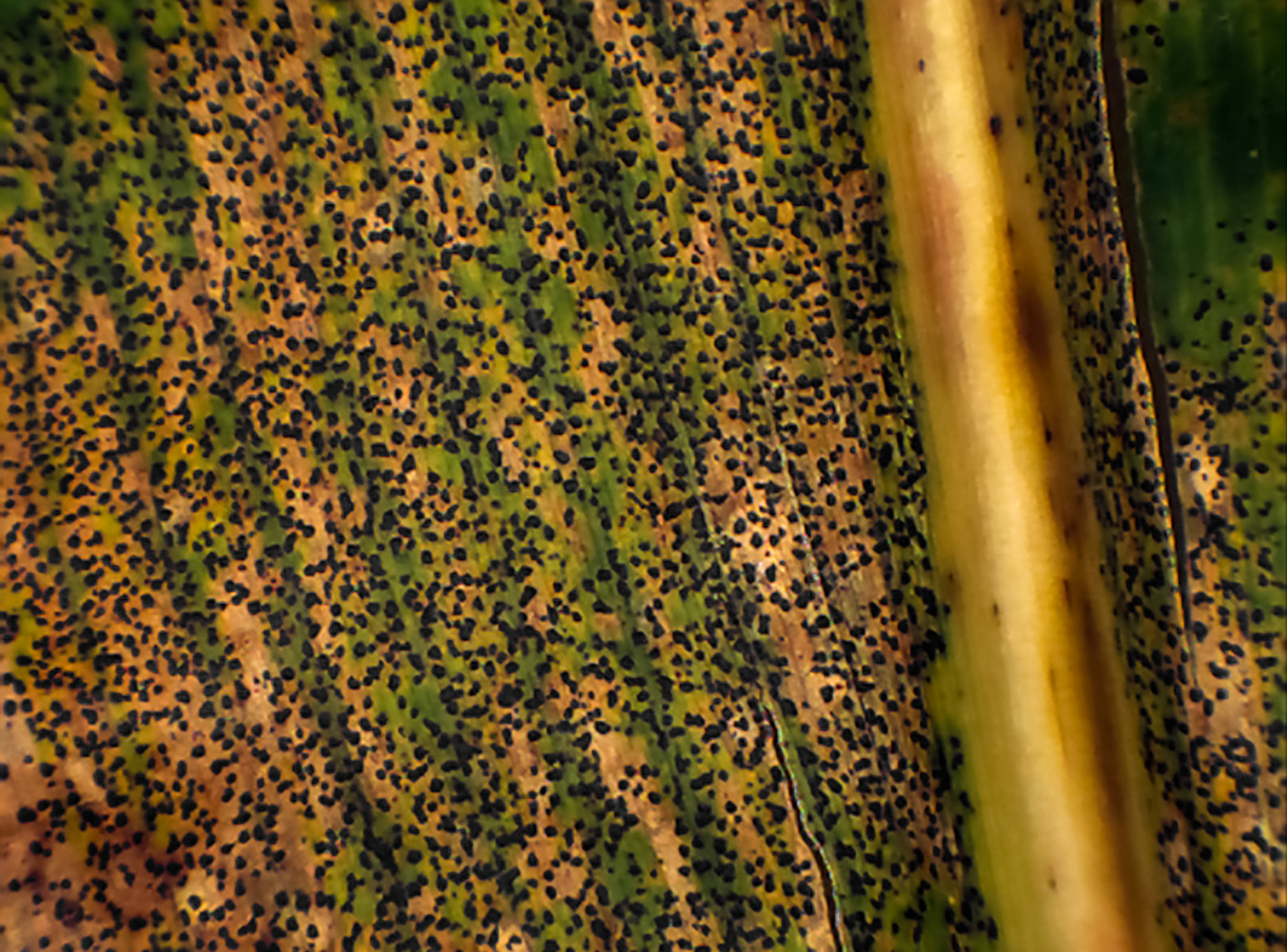Trending Corn Diseases: Tar Spot


When it first appeared near Lafayette, Indiana, and Princeton, Illinois, in 2015, agriculture experts thought it was a fluke. Tar spot had mostly been confined to Mexico and Central and South America for the past century.
“We thought this blew in from Central America on a hurricane and found a susceptible host,” says Scott Heuchelin, Global Phytosanitary Risk Mitigation Lead, Corteva Agriscience, describing the common opinion at the time. “We saw the symptoms but thought there’s no way it’s going to overwinter in our harsh winters that we have in the Midwest.”
When tar spot reappeared the following season in 2016, “That told us it can adapt to our environment here with the colder temperatures,” Scott says. Ten years later, tar spot is not only still here, it’s distributed more widely and outbreaks are more frequent.
While tar spot has been most troublesome in the Midwest, Scott notes that it has also appeared out west. The disease primarily moves with wind patterns, but rain events are also instrumental in its spread. “The inoculum, or spores, that come off of tar spot can be picked up by rain, especially with rain splash,” Scott says. “The spores ooze out onto the leaf surface and the rain splash creates an aerosol. It volatilizes those spores up into the air. Turbulent updrafts in storms can then pick up those spores and move them great distances.”
Tar spot can be difficult to distinguish from other fungal diseases, and plants may be infected for up to 10 days before lesions appear. The telltale sign of tar spot is a raised black lesion with a halo around it, resembling a fisheye. Unlike other fungal diseases, tar spot lesions don’t rub off.
Tar spot thrives in wet conditions. “In 2018, we saw an epiphytotic event in southern Wisconsin and northern Illinois,” Scott says, “The disease moved in very early, around the first week of July and then from that point forward, they had flooding conditions and frequent rains during the ear fill period. As a result, this disease really exploded in those areas.” Scott says growers in that region experienced severe yield losses and stalk lodging because the tar spot damaged so much leaf material.
Right now, there are no hybrids available that are specifically resistant to tar spot. However, this is an area of focus for Corteva breeders, who hope to bring forward options in the near future. In the meantime, your customers’ best defense against tar spot is selecting hybrids with demonstrated tolerance. Corteva’s corn portfolio has performed comparatively well in the face of this disease, most likely due to its genetic diversity. Agronomists also recommend being ready to apply fungicide if conditions turn wet, humid and cool.
“Corteva is fortunate. A lot of our portfolio shows pretty good tolerance to this disease, but you know, that can always be improved on,” Scott says. “Corteva corn breeders are working on that right now. Tar spot has really gotten everybody’s attention.”
™ ® Trademarks of Corteva Agriscience and its affiliated companies. © 2025 Corteva. 025753 LC (03/25)